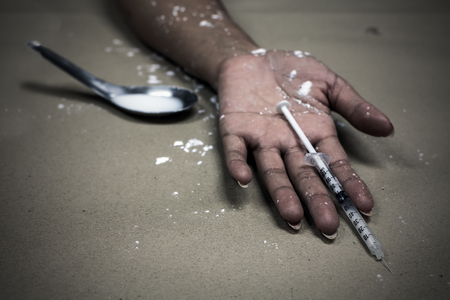
PLAISTOW, N.H. (AP) — A partnership between a poet and an artist who both lost loved ones to heroin overdoses started with similar phone calls at separate beaches four years ago.
Mary Ellen D’Angelo-Lombardi was waiting out a rainstorm in July 2014 when her husband called to say her son’s best friend was dead at age 18. Three months later, Anne Marie Zanfagna was on Cape Cod for the weekend when she heard from her husband that their 25-year-old daughter, Jackie, had overdosed.
For months afterward, D’Angelo-Lombardi struggled to return to her writing, and Zanfagna’s paints and brushes went untouched. But after eventually finding separate solace in their art, they came together to self-publish a book they hope will reduce the stigma of addiction but also warn young people away from drugs.
“Every conversation this book starts is a good thing,” said D’Angelo-Lombardi, who runs an adult education program in Boston. “If you’re talking about it, it’s out in the light, and it’s healing.”
“Portraits, Poems & Heroin: 30 Souls Tell the Story” includes a series of poems D’Angelo-Lombardi wrote about her son’s friend, along with Zanfagna’s brightly colored portraits of young people who died of overdoses and brief biographies written by their families.
“Dan was a very functional addict. He worked every day and put a lot of effort into his appearance. If you saw him, you would never think he was an addict,” reads the biographical material accompanying the orange, violet, black and white portrait of 40-year-old Daniel Barnes.
In the following poem, “My Favorite Place”, D’Angelo-Lombardi describes thinking of her son’s friend whenever she returns to the beach where she learned of his death: “every time I go your presence/woven into the magic of the tide.”
While the poems aren’t specifically about those pictured, D’Angelo-Lombardi said, they touch on the same emotions experienced by their families and loved ones.
“We relied on the commonality of all the stories, the commonality of addiction, the commonality of how it ends, the commonality of how those left behind feel,” she said. “So although each poem doesn’t maybe match the portrait per se, there’s just a commonality that runs through the grief of losing a loved one that way.”
Zanfagna, who began getting portrait requests from other parents after bringing her daughter’s painting to a grief support group, runs a nonprofit organization called Angels of Addiction to raise money for scholarships and addiction recovery resources. She met D’Angelo-Lombardi at one of the support group meetings, and the two decided to work together on the book, which is available for sale online. They hope to get it into school libraries and would like to present their work to students.
Seeing her paintings published alongside the poems felt “fabulous,” Zanfagna said, especially her daughter’s portrait on the cover.
“The cover of the book just screams ‘Jackie’, and that made me so happy because I did not want her or this epidemic to be swept under the rug,” she said. “I had to speak out because the pain I went through was unimaginable.”
Both women said the publishing process was more complicated than they anticipated, but worth the effort.
“I think Anne Marie doing her portraits and me doing my poetry was a healing experience for both of us, and then putting this book together was continued healing,” said D’Angelo-Lombardi. “We feel fortunate that we can heal through our art and we understand that it’s not something that everyone has. That’s another reason we feel a need to share it.” CC
RELATED STORIES:
In US, opioid overdoses up 30 percent in a year
‘We’re all paying’: Heroin spreads misery in US